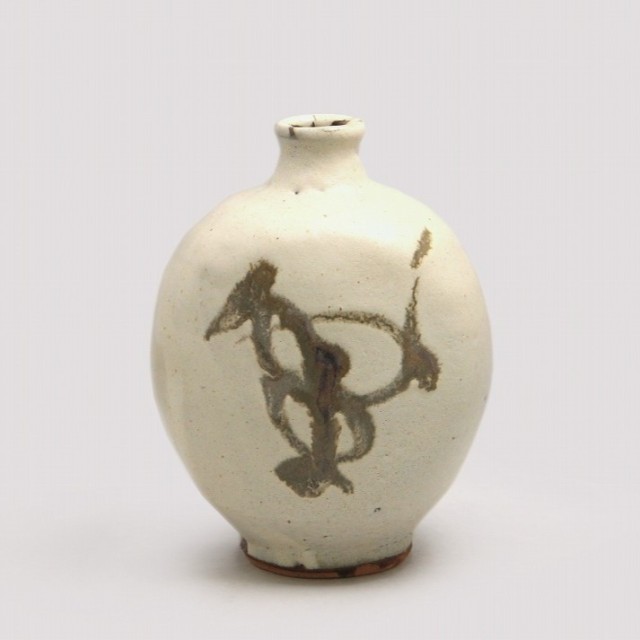
SOLD
with a signed box
Showa period
Living National Treasure
D14cm×18㎝ H24cm
This white-glazed vase with iron brushwork is a distinguished work by Shoji Hamada, a pivotal figure in the Mingei (folk craft) movement and one of Japan’s most celebrated modern potters. The vase features a softly rounded form and a serene white glaze, enlivened by a bold, gestural iron-painted motif.
The brushwork represents the Sugarcane Motif (Tōkyo-mon), one of Hamada’s signature patterns. Inspired during his stay in Okinawa, where he observed the local sugarcane plants, Hamada developed this original design as a personal interpretation of nature's form and vitality. It became one of his most iconic and expressive motifs.
This work exemplifies Hamada's philosophy of finding beauty in everyday use, harmonizing utility with artistic expression. The dynamic brushwork, combined with the warmth of handmade craftsmanship, makes this vase not only a functional vessel but a timeless piece of Mingei art.
Shoji HAMADA(濱田庄司)
1894 - 1978
He was a potter within the folk tradition of Japanese. He was a long-time friend of Kanjiro Kawai, Soetsu Yanagi, and Bernard Leach with whom he co-founded the Japan Folk Art Association in 1926. Hamada became an important figure in the Japanese folk arts movement. After 1923, he moved to Mashiko where he rebuilt farmhouses and established his large workshop. Throughout his life, Hamada demonstrated an excellent glazing technique, using such trademark glazes as temmoku iron glaze, nuka rice-husk ash glaze, and kaki persimmon glaze. Through his frequent visits and demonstrations abroad, Hamada influenced many potters of the world in later generations as well as those of his own.
Contact about the Item